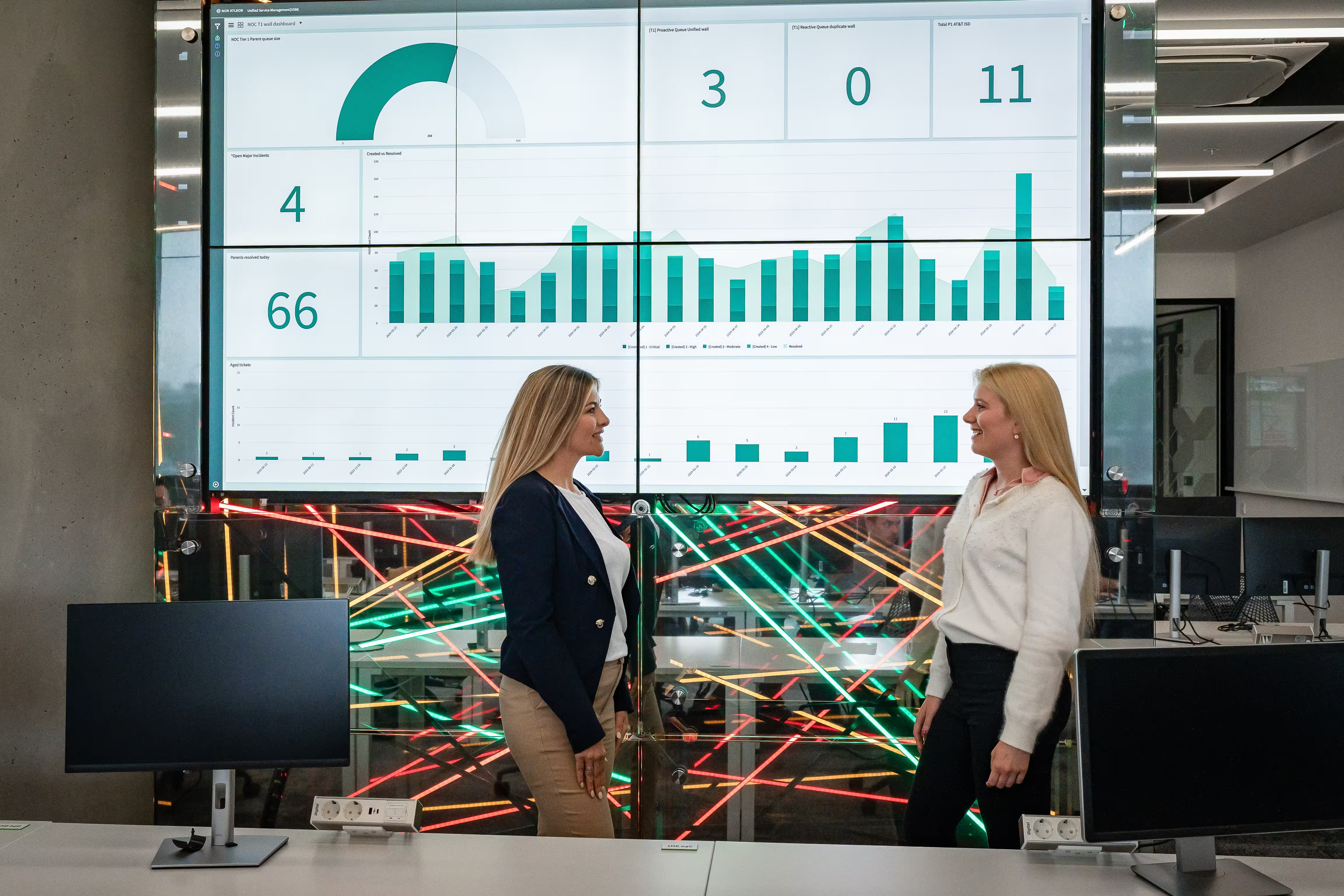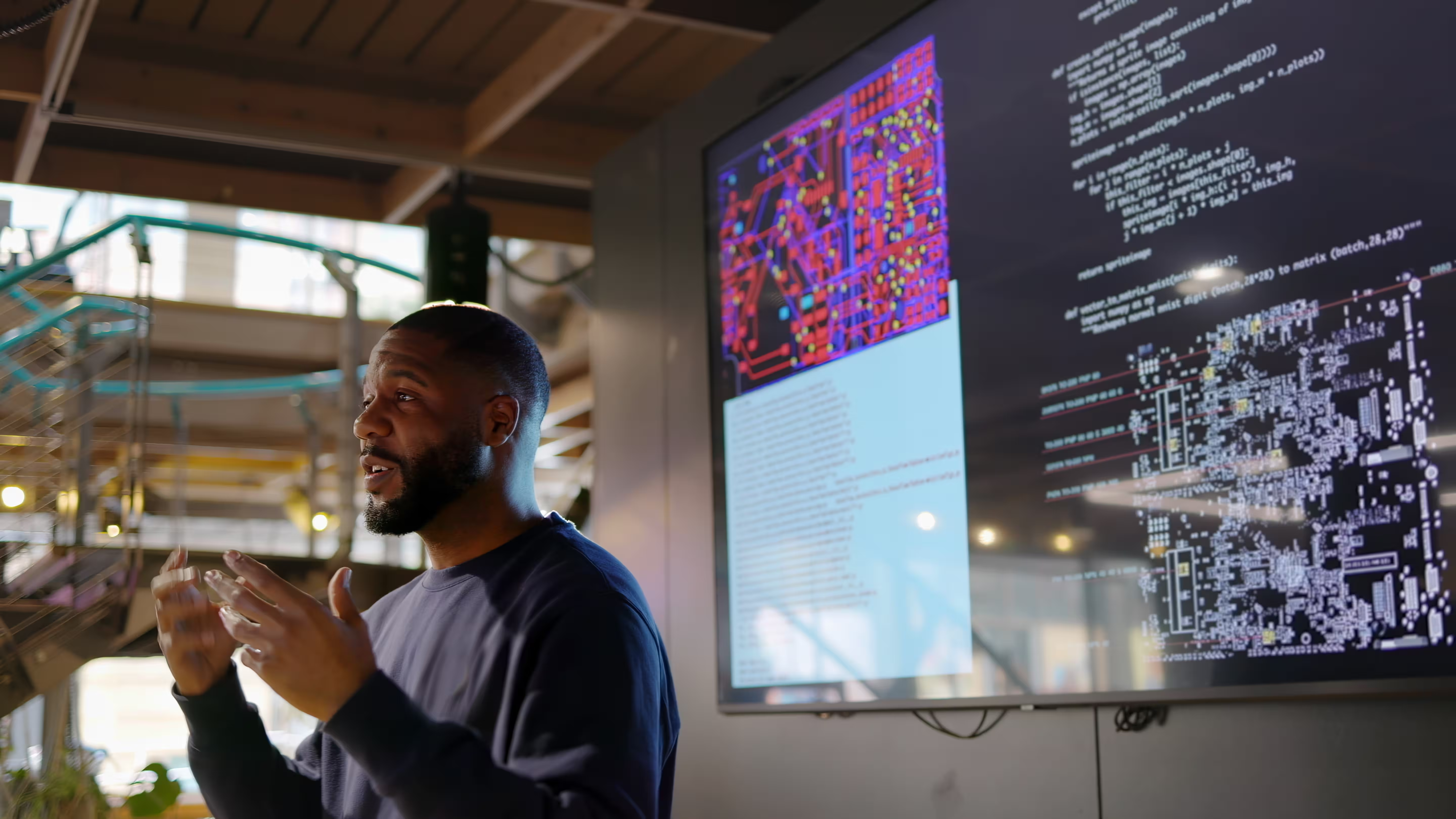Is bank and go the next big thing for frictionless vision technology?
Tech companies have been taking friction out of physical experiences for years, primarily through digitization. Amazon’s creation of the Amazon Go stores—delivering a completely frictionless, just-walk-out shopping experience—was one of the most ambitious frictionless implementations to date. And it’s one that has continued to send shockwaves and shape the discussion of consumer retail experiences since it was publicly unveiled in January 2018. People have stood in line for hours to experience this new way of shopping. And while that may seem contradictory to Amazon’s intention, once you visit you can see how it’s likely to inspire what future shopping journeys might look like.
Such a leap forward takes a while to mature into a scalable and cost-effective solution, but Amazon has plans for thousands of Go stores across the US by 2026—and internationally; the first UK store opened in London in March. And it’s poised to reshape consumers’ expectations of shopping and drive substantial change in retail.
While the public might be focused on the new consumer experience, retailers quickly noticed how frictionless shopping would reshape their business operations and beyond. Real-time data on consumers and their interactions with products on shelves could fundamentally impact the entire retail ecosystem, not just the grocery store.
And retail isn’t alone. New frictionless solutions target industries well beyond retail with applications in manufacturing, construction and healthcare.
Which begs the question: What if frictionless vision technology like Amazon Go stores comes to banking? How might it redefine customer experiences or branch operations in its wake?
What is frictionless technology?
While there’s no strict definition for frictionless technology, it is generally understood to be about removing physical or digital barriers to make a journey simpler and easier. In the case of Amazon Go, frictionless is enabled with computer vision, shelf sensors, and sophisticated AI. And whatever technologies you choose, the end goal of frictionless vision is to move checkout from the end of the journey to a continuous journey throughout the store.
As you remove an item from the shelf, it is placed in your virtual cart. Place it back on the shelf, and it is immediately removed from the cart. And only when you leave the store is the transaction completed, and you are charged for your shopping trip. It is hard to get more frictionless than completely removing the need for the checkout experience.
While the retail narrative for frictionless centers on the end consumer, the same frictionless solution provides an even greater benefit for retailer operations and the broader supply chain.
How much greater? According to McKinsey, a full store computer vision system can enable up to a 30 percent labor reallocation, significantly reducing the billions lost in annual slip and fall fraud. What’s more, it drives increases in on-shelf product availability to boost retailer revenue by over 7 percent through improved stock management and supplier coordination.
With real-time data on shelf stock, the retailer can ensure products are on the shelf, distributors know which items are running low and manufacturers can plan for the needs of the retailers and their end customers. According to Nielsen, manufacturers reserve up to 20 percent of their budget for marketing, product placement on store shelves and rebates. That’s $225 billion in annual spend that could be made on real-time data instead of month-old data as they do today. Frictionless technologies in retail enable the shift to a Digital Supply Network (Deloitte) and the potential to unlock trillions in new value across the ecosystem.
Public attention might be focused on just-walk-out shopping, but the industry, and frictionless technology players, see a much bigger opportunity.
Frictionless technology in banking
Is the same potential impact true in banking?
Looking at a typical financial institution’s (FI’s) branch layout, the diversity of potential applications for frictionless vision becomes apparent. Vision can enhance customer experience and empower your teams to spend more time delivering value to customers. Operationally, frictionless vision could:
- Improve security for customers and staff
- Enhance anti-money laundering processes
- Improve Know Your Customer and Bank Secrecy Act reporting
- Streamline the audit and dual control processes
The capabilities of frictionless vision pair well with financial institutions’ (FIs) top priorities for investment. And improving customer experience and leveraging big data and AI are the top priorities, according to the Financial Brand’s 2018 Retail Banking Trends and Predictions report. Branch transformation, another common investment priority, takes on a whole new light with frictionless vision.
Customer experience & branch transformation
There are a number of ways frictionless vision can reshape branch experiences for customers. From personalization, seamless cross-channel experiences to technology integration, frictionless vision can impact the teller line, drive-thru, meeting rooms and public areas of the branch. Frictionless vision can provide situational awareness, giving meaningful context to anticipate and support customer needs and business operations within the branch.
“The introduction of ATMs, cash dispensers and digital banking channels have reduced customer interactions with branch staff. Branch transformation efforts have increasingly pushed operational tasks to cross-functional staff. Yet, the branch advisors’ main goal remains to build relationships, not watching over other staff, counting money in the vault, or filling out logs. There hasn’t been a lot of innovation in how the audit and compliance tasks can be done in a radically different way. We need to figure out ways to let branch staff focus on taking care of customers, identifying their banking needs and providing appropriate financial products for them. Frictionless might let branches return their full attention back where it belongs—with the customer.” Sudip Khan, Retail Open Banking Leader - International Retail Online Banking, RBI
In branch, customer experiences are the highest impact yet come at the highest cost for FIs. Maximizing the value of those experiences requires unique customer insights and a contextual lens to determine the best action to take at that moment for that individual. Delivering a level of personalized services and the right services should be built on behavioral analysis enabling the FI to meet the customer’s needs at that moment. Frictionless vision might be the way to link branch transformation and cross-channel experiences to deliver a seamless customer journey and provide a unique value that FinTechs cannot replicate.
But there are challenges. Striking a balance between frictionless and the invasiveness of an all-seeing vision system is critical to winning and keeping customers. FIs are generally in the unique position with their customers trusting them with their financial lives so they expect banks to know them well. The role of a trusted advisor may grant banks greater leeway than tech companies in applying big data and delivering deeply personalized experiences.
Besides the advantages of customer-facing applications, frictionless vision could provide added regulatory benefits of the Know Your Customer, Bank Secrecy Act and branch security operations. Delivering near-real-time insights would be beneficial for regulatory authorities, potentially stopping fraud faster and enabling quicker threat identification and response. These capabilities can improve bank security and law enforcement responses.
A deeper look into branch & bank operations
Perhaps the quickest frictionless banking opportunity is removing the friction around the dual control process—the buddy system and paper log that provides the auditable record or valuable assets and cash movement—and enables a single control future. Surprisingly, that dual control log is not too much more advanced than the restroom cleaning log in your local fast-food restaurant , but tracks and records $250,000 in banks today! This process is fundamental to branch and bank operations, impacting security, branch operations, financial investigations, audits and training.
The manual nature of the process means that paper logs and people following the process correctly are essential, driving constant audits and training across the branch network. Dual control logs are regularly shipped to expensive long-term secure storage facilities if needed for financial investigations and future audits. Applying frictionless vision to dual control might enable a fully digital single control solution to deliver operating efficiencies across enterprise bank operations.
Tackling the inefficiencies in dual control is not new. Dual control is a cost of doing business—over $84,146 annually for a typical branch. And it also impacts the customer experience, with frequent staff interruptions throughout the day so two staff members can be part of the dual control procedure. So while it’s essential to bank operations, it’s certainly not a customer value add. Solutions like ATMs, teller cash recyclers, and electronic safes all target reduced dual control overhead and deliver a strong value for branches and customers.
The time spent by branch staff on dual control activities often exceeds 351 hours annually per branch. Across the US, these hours equate to a $2.7 billion labor cost after the efficiency gains of ATMs, Teller Cash Recyclers, and electronic safes are included at the branch level alone. The impact of digitizing the dual control logs and instant access to video would have across the audit, financial investigation, risk management, and branch operations groups at the enterprise level would likely dwarf these time and cost figures several times over.
Security
Branch security is another area ripe for frictionless vision applications. In fact, this is perhaps the most advanced area already using such technology in banking today. Security camera vendors have been adding smart AI technology to their video equipment and cloud platforms to augment operations for years. These cameras help crime prevention and threat identification. During investigations, this vision technology saves security time and reduces FI loss. And this return is amplified as these systems begin to connect across FI operations to share additional insights or leverage existing vision systems.
Indeed, frictionless vision has more freedom to operate in the security space than in customer experience or branch transformation. Security acts only when there is an issue, mostly removing the invasive concerns of customers. Plus, security cameras exist in all branch areas, making vision infrastructure an everyday experience for customers and staff. Leveraging that existing infrastructure for applications beyond security reduces the implementation cost and offers a potential path to accelerate frictionless vision in banking.
The path to a frictionless future
The challenges of applying frictionless vision to reimagine banking should not be understated. Technical barriers, upgrading infrastructure and overhauling business processes make adoption a daunting undertaking. And like many disruptive technologies, the key is finding an application so valuable to one owner that they will prioritize the investment it takes to see it through and put up with the inevitable speed bumps along the way.
Turning dual control into single control is a grand vision with many challenges to overcome before it could be delivered and deployed at scale in banking. Perhaps the first step towards that vision is simply digitizing the process and driving efficiencies at the enterprise banking level.
Yes, frictionless vision can simplify banking for customers and deliver efficiencies to an FI’s operations. It’s too early to tell how banking will be changed by frictionless vision, but when it arrives in banking, few FIs will remain untouched.
Let’s explore what’s possible for your business. Our team is ready to connect and discuss tailored solutions that meet your goals.
Thank you for reaching out. A member of our team will be in touch shortly to continue the conversation.






%20(1).jpg)





%20(1).jpg)

%20(1).jpg)




%20(1).jpg)
%20(1).jpg)
%20(1).jpg)

%20(1).jpg)
%20(1).jpg)
.jpg)
.jpg)
.jpg)
%20(1).jpg)
.jpg)
.jpg)
.jpg)




.jpg)
.jpg)
.jpg)
.jpg)
